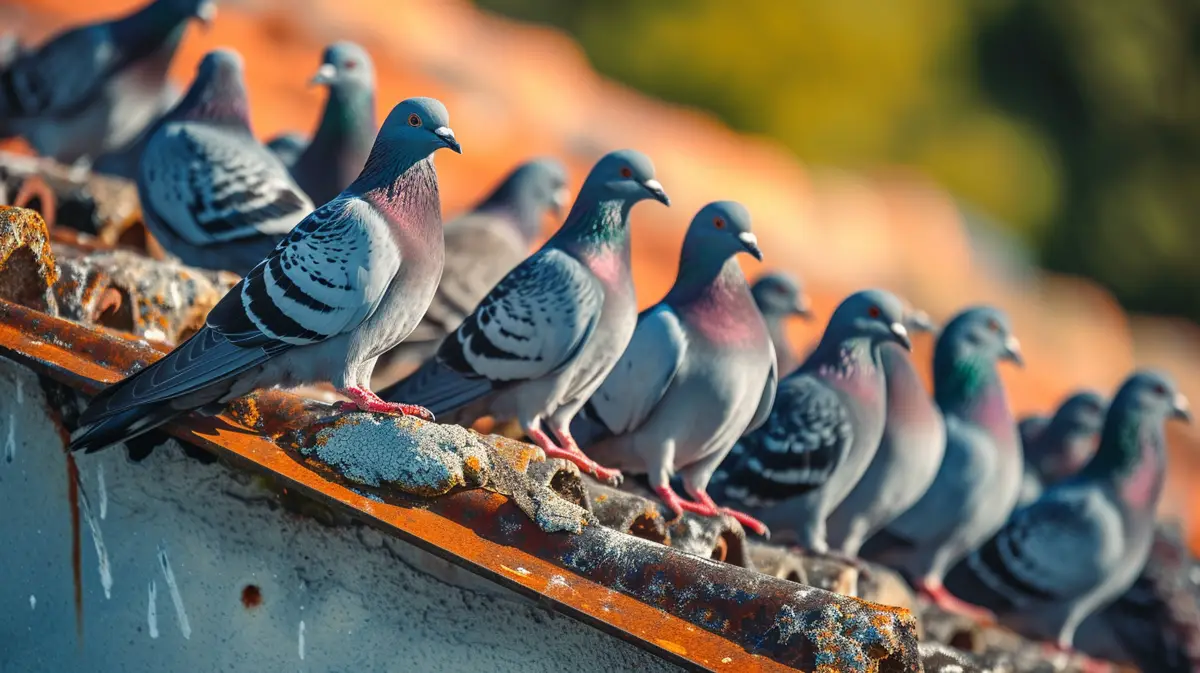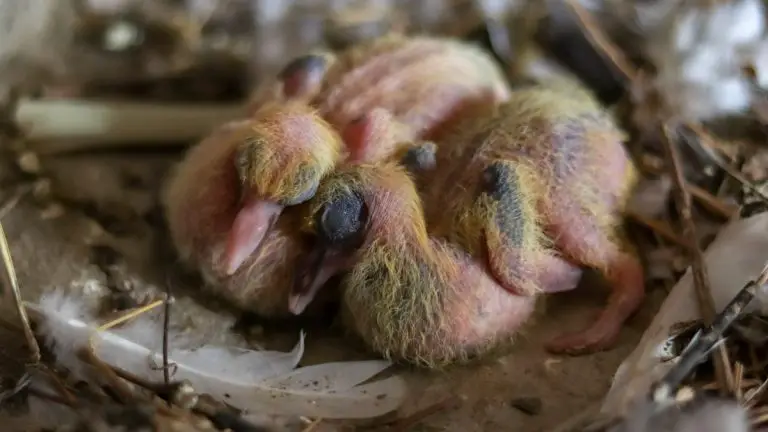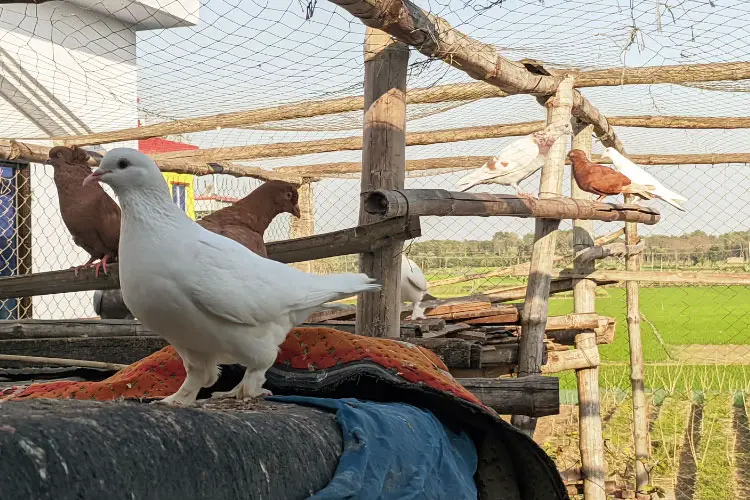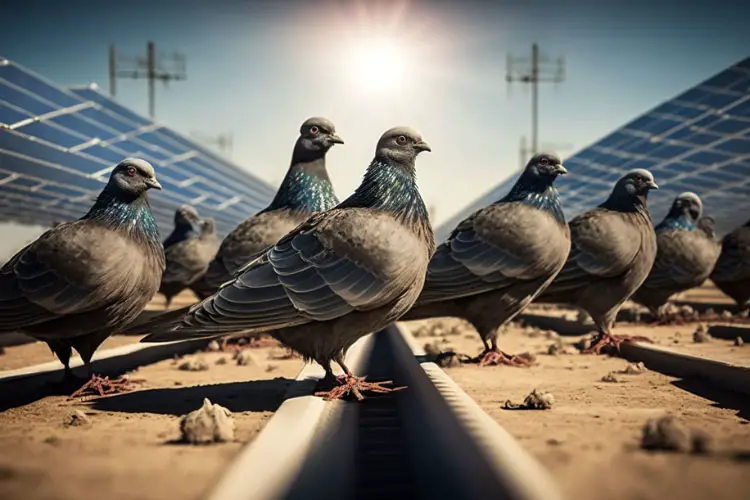Decode Pigeon Body Language for Better Understanding
Pigeons, with their distinctive cooing and fluttering wings, are a common sight in urban areas. While many may dismiss them as mere pests, these birds actually have a complex system of communication through body language. Understanding pigeon body language can provide valuable insights into their behavior, needs, and even their emotional state. As an expert in avian behavior, I’ve spent years observing and decoding the subtle cues that pigeons use to communicate with each other and with humans. In this article, I’ll share my knowledge and insights on how to decipher pigeon body language, helping you to better understand and appreciate these fascinating creatures.
Pigeons, often referred to as “rats with wings,” have a reputation for being dirty and nuisance birds. However, their body language tells a different story. Every tilt of their head, flap of their wings, and puff of their feathers holds meaning. By learning to interpret these signals, you can gain a deeper understanding of pigeons and the world they inhabit. In this article, I’ll guide you through the intricacies of pigeon body language, revealing the hidden messages behind their movements. Whether you’re a bird enthusiast, a curious observer, or simply looking to coexist peacefully with these urban dwellers, this guide will equip you with the knowledge to decode pigeon body language and unlock the secrets of their communication.
The Importance of Understanding Pigeon Body Language
As an expert in avian behavior, I can confidently state that understanding pigeon body language is crucial for gaining insights into their behavior, needs, and emotional state. While many people view pigeons as mere pests, they actually have a complex system of communication through body language. By learning to interpret their signals, we can reach a deeper understanding of these remarkable creatures and coexist peacefully with them.

Here’s why understanding pigeon body language is so important:
- Emotional state: Pigeons, like any living beings, experience a range of emotions. By observing their body language, we can determine whether they are happy, relaxed, scared, or stressed. This knowledge allows us to respond appropriately and provide a conducive environment for them.
- Needs and desires: Pigeons have specific needs and desires that they communicate through their body language. Whether they are seeking food, water, shelter, or a safe place to nest, understanding their signals helps us fulfill these needs and ensure their well-being.
- Communication cues: Pigeons communicate with each other through various body signals. By grasping their language, we can decipher a wealth of information about their intentions, warnings, and social interactions. This insight is invaluable for understanding their flock dynamics and behavior.
- Building trust: Developing a rapport with pigeons requires establishing trust. By interpreting their body language correctly, we can build trust by responding appropriately to their cues. This trust is crucial for establishing a positive relationship with pigeons and gaining their confidence.
- Preventing conflicts: Misunderstanding pigeon body language can lead to conflicts or harmful interactions. By understanding their signals, we can avoid unintentionally provoking them or causing distress. This knowledge allows us to create a harmonious coexistence between humans and pigeons.
Understanding pigeon body language is essential for gaining insights into their emotional state, needs, desires, communication cues, building trust, and preventing conflicts. By taking the time to learn and comprehend their unique system of communication, we can foster a better understanding of pigeons and establish a peaceful relationship with these remarkable birds.
Common Misconceptions about Pigeons
Pigeons, with their unique appearance and behavior, often face misconceptions and misunderstandings. Let’s debunk some common myths and shed light on the truth about these remarkable birds:
- “Pigeons are dirty and carry diseases.”
- “Pigeons are dumb and untrainable.”
- “Pigeons are pests and cause damage.”
- “Pigeons are aggressive and attack people.”
Understanding the truth about pigeon behavior and debunking misconceptions allows us to appreciate these birds for who they truly are. By promoting education and awareness, we can foster a positive relationship with pigeons and ensure their well-being in our shared environments.
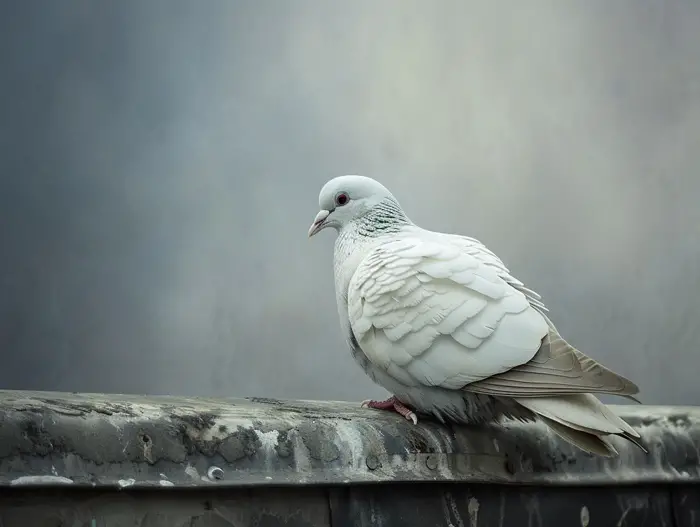
Deciphering Pigeon Head Movements
When it comes to understanding pigeon body language, one of the key aspects to observe is their head movements. Pigeons use various head movements to communicate with each other and express their intentions. By paying attention to these movements, we can gain valuable insights into their behavior and emotional state. Here are a few common pigeon head movements and what they signify:
- Nodding: Pigeons often nod their heads up and down in a rhythmic motion. This behavior is typically seen when they are courting or trying to establish dominance. It’s their way of asserting their presence and communicating their intentions to other pigeons.
- Bowling: Another head movement observed in pigeons is “bowling.” This is when a pigeon bobs its head forward and backward quickly. It is often accompanied by cooing sounds. Bowling is a form of courtship behavior, used to attract a mate or establish a bond between pigeons.
- Pecking: Pigeons peck at the ground or other objects with their beaks, and this behavior can often be observed during feeding. However, it can also be a sign of aggression or territoriality. If a pigeon starts pecking at another pigeon or object, it may be trying to establish dominance or assert its territory.
- Jerking: Sometimes, pigeons display a jerking movement of their head from side to side. This can indicate their alertness or wariness of their surroundings. They may be scanning for potential threats or assessing the environment to ensure their safety.
Understanding these head movements can give us valuable insights into the behavior and intentions of pigeons. It allows us to decode their communication and respond accordingly. Whether they are courting, establishing dominance, feeding, or just staying alert, pigeon head movements provide us with a glimpse into their world. By observing and respecting their body language, we can foster a better understanding and appreciation for these remarkable creatures.
Interpreting Wing Flapping and Fluttering
When observing pigeons, it’s important to pay attention to their wing flapping and fluttering. These wing movements can provide valuable insights into their behavior and intentions. Let’s delve deeper into interpreting the meaning behind these fascinating gestures.

1. Communication Signals
Pigeons use wing flapping and fluttering as a means of communication. Just like humans use hand gestures to convey messages, pigeons rely on their wings to communicate with each other and with us. These movements serve as signals to express various emotions, needs, and intentions.
2. Excitement and Vigilance
One common reason for wing flapping is excitement. You may notice a pigeon flapping its wings rapidly when it’s feeling enthusiastic or energized. This behavior is often accompanied by cooing sounds, showing that the pigeon is in a state of excitement.
On the other hand, pigeons may also flap their wings briskly when they are feeling vigilant or on alert. This is their way of preparing for takeoff and being ready for any potential threats or danger.
3. Courtship and Mating Displays
Wing flapping is an essential part of courtship and mating displays among pigeons. Male pigeons often perform elaborate wing flapping sequences to attract females. These displays can include a combination of slow, rhythmic flapping movements, and sudden bursts of rapid wing flapping. It’s their way of showcasing their strength, health, and vitality to attract a mate.
4. Stretching and Maintenance
Pigeons also engage in wing flapping and fluttering as a form of stretching and maintenance. Similar to how we stretch our muscles to keep them supple, pigeons stretch their wings to ensure they remain strong and functional. Additionally, wing flapping helps to keep their feathers clean and properly aligned, contributing to their overall cleanliness and grooming habits.
5. Warning or Distress Signals
In certain situations, pigeons may flap their wings in a way that conveys a warning or distress signal. Rapid, aggressive wing flapping accompanied by vocalization can indicate that a pigeon feels threatened or cornered. It’s crucial to recognize these signals and give the pigeon space to alleviate any potential stress or anxiety.
Understanding Puffed Feathers and Body Posture
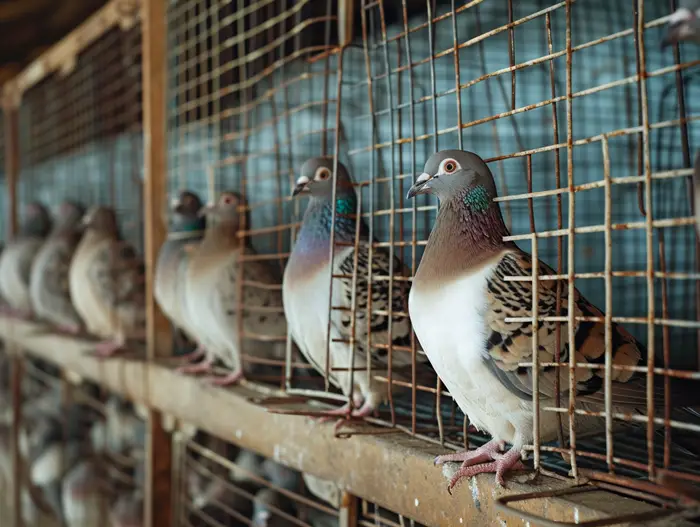
When it comes to understanding pigeon body language, one important aspect to consider is their puffed feathers and body posture. These visual cues can provide valuable insights into a pigeon’s emotional state and well-being. Let’s take a closer look at what these signals might mean:
1. Puffed Feathers: Pigeons often puff up their feathers, especially when they feel threatened or want to appear larger. This behavior serves as a defense mechanism, creating the illusion of a more formidable presence. It’s important to note that while puffed feathers can indicate aggression, they can also be a sign of relaxation or contentment.
2. Body Posture: Pigeons use their body posture to convey a range of messages. Here are a few key postures and their interpretations:
- Upright Posture: When a pigeon stands tall with its chest out and head held high, it typically signifies confidence and alertness. This posture is often seen during courtship displays or when pigeons are on high alert.
- Crouched Posture: A pigeon that crouches low with its body close to the ground is likely feeling threatened or fearful. This posture is a defensive mechanism, preparing the pigeon for a quick takeoff if needed.
- Head Tucked Posture: Pigeons that tuck their heads into their feathers are usually trying to conserve heat or rest. It’s a sign of relaxation and comfort.
By paying attention to these puffed feathers and body postures, I can gain a better understanding of a pigeon’s emotions and intentions. It’s important to remember that body language can vary slightly among individual pigeons, so it’s crucial to consider the larger context and observe other behaviors to accurately interpret their messages.
Understanding pigeon body language is not only fascinating, but it can also help us develop a deeper appreciation for these remarkable creatures.
Conclusion
Understanding pigeon body language is essential for gaining insights into their behavior, needs, and emotional state. By debunking common misconceptions about pigeons and focusing on key visual cues such as head movements, wing flapping, puffed feathers, and body posture, we can decipher their intentions and emotions.
Pigeons communicate through their body language, using subtle movements and postures to convey their messages. By observing their head movements, we can determine if they are alert, curious, or signaling danger. Wing flapping can indicate excitement, aggression, or an attempt to establish dominance.
Puffed feathers and body posture are also crucial indicators of a pigeon’s emotional state. Puffed feathers may signify relaxation or contentment, while an upright posture can indicate confidence. On the other hand, a crouched posture or head tucked posture may suggest fear or submission.
By paying attention to these visual cues, we can better understand and respond to a pigeon’s needs and emotions. This understanding allows us to build a stronger connection with these intelligent and misunderstood birds. So, the next time you encounter a pigeon, take a moment to observe their body language and gain a deeper understanding of their world.
